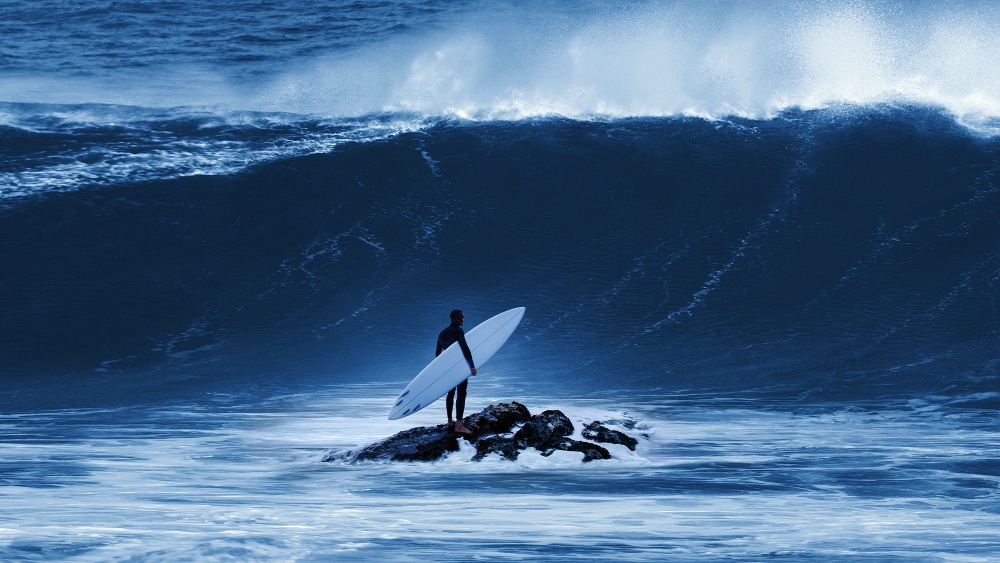
HBO’s limited series 100 Foot Wave focuses on Garrett McNamara as he sets out to conquer the world’s tallest waves. Filmed in various surfing locations around the world, the series features jaw-dropping footage of some of the most extreme swells of all time.
A top surfer for decades, McNamara is joined in Nazaré, Portugal, by elite athletes such as Kai Lenny, CJ Macias, Andrew Cotton, and Maya Gabeira — all of whom are competing in the world’s most challenging Big Wave tournament. Through interviews and training sequences, director Chris Smith offers a unique window into their wild world.
Credited as Director of Photography for the series’ water sequences, Mike Prickett is a world-famous cameraman who has been covering surfing since 1979. In addition to his documentary footage, Prickett shot underwater sequences in features like Soul Surfer. With his Hawaii-based company Salt + Air Studios, Prickett has fostered technological advances, including a remote-control gimbal used in 100 Foot Wave. (The gyro stabilizer was co-developed by Prickett’s Salt + Air Studios, and ShotOver Camera Systems.)
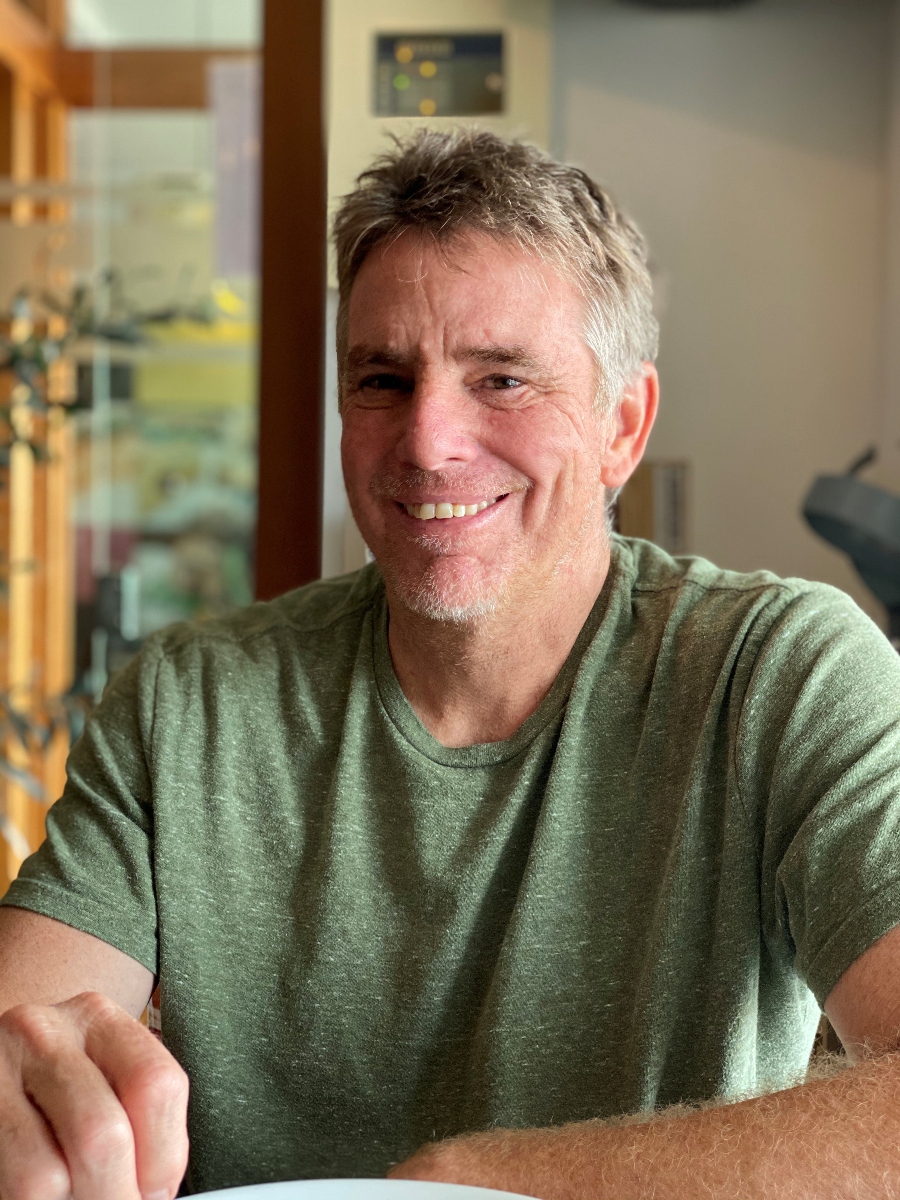
Prickett has had a rough go of it — he was in a severe car crash in 1984 and suffered a diving accident in 2012 that left him paralyzed from the waist down — but he has always picked himself back up, returning to the ocean stronger for it. He even won an Emmy this past year for his work on Episode 4 of 100 Foot Wave. Prickett has already started work on the second season of the series, and he spoke with Below the Line via Zoom from Hawaii.
Below the Line: There are over a dozen cinematographers listed in the credits of 100 Foot Wave. What did you do on the series?
Mike Prickett: We were tasked with the challenge of getting everyone in and out of the water, all the rescues, all the big rides, [and] covering them from water and land.
BTL: Do you still go in the water?
Prickett: I do. I swim pretty good. I just can’t walk. But I still do a lot of water cinematography.
BTL: The series actually covers your accidents, including how you were paralyzed rescuing a diver. And yet, in the first episode, we see you operating what looks like a huge rig.
Prickett: That was an IMAX 3D rig we used for The Ultimate Wave Tahiti. Those rigs are really hard to get into big waves. We use similar housings now, a bit smaller.
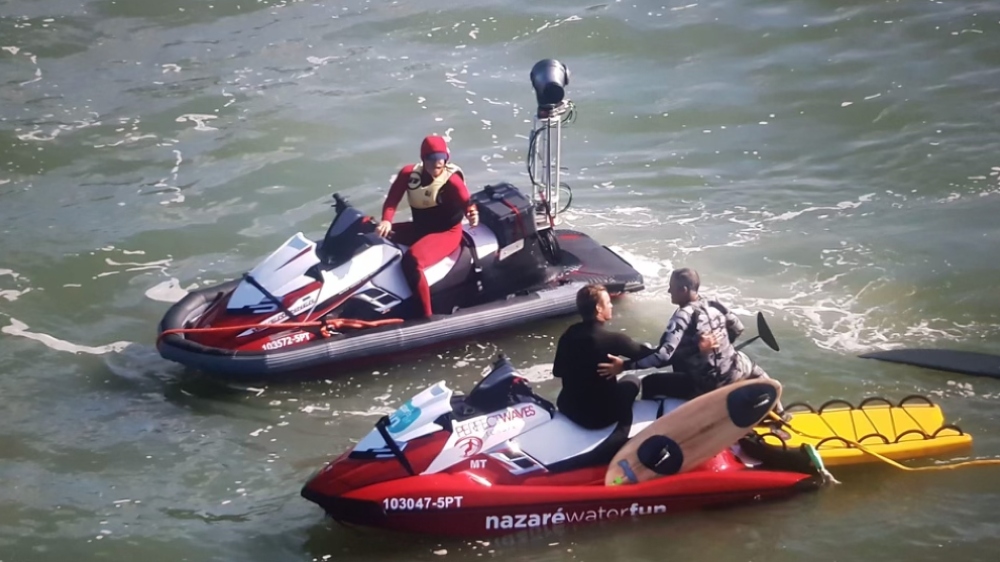
BTL: What has changed the most since you started shooting in 1979?
Prickett: I was shooting 16 and 35-millimeter film. It seemed like, for about 20 years, nothing much changed. Everything was pretty standard — similar cameras, maybe different housings. On film, you didn’t get your footage back right away. You didn’t know if you had a hair in the gate, [or] if you got your exposure right. And in water, you had a 100-foot or 200-foot roll. Now you can shoot all day long on one terabyte card and just shoot forever. Plus, you can rewind and see what you shot immediately.
Surfers didn’t have all the safety equipment back then. They couldn’t charge each wave. They would catch one or two big waves a day, at most. Now they can charge all day long, and we can shoot all day long.
BTL: Can you talk a bit more about safety, because it’s a topic that becomes central to the series?
Prickett: It’s much [safer] now than back then because we didn’t have Jet Skis. Back then, it took a water safety team up to 30 minutes to get out to you. Now, they can get you on a Jet Ski and back to the beach in minutes.
Without a Jet Ski, to paddle down a big wave you have to match it speed for speed. It was really hard to get down a wave to the right spot. But with Jet Ski towing, it already matches the speed. You just let go of the rope and you’re instantly in the right spot. You don’t have to worry about getting sucked up the face. If you fall, you have that Jet Ski driver ready to pick you up. So you don’t have to take wave after wave on the head. It really gives the athletes a lot of courage. They can save their energy [and] take a lot more pounding.
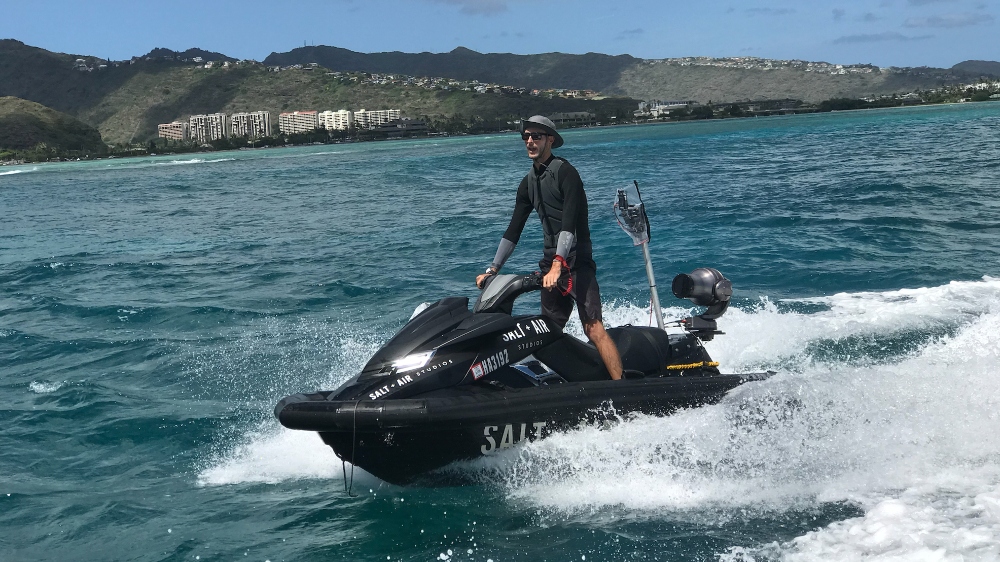
BTL: What kind of relationship develops between a shooter and a surfer?
Prickett: It’s really, really close. The surfer tells the cameraman, ‘I’m going to work this way, stay in this right-hand area.’ The cameraman sees the surfer stand up, he goes to the pit, the part of the wave they talked about. He has to get to that location, and the surfer has to work around him. The cameraman has to guess what the wave’s going to do and what his surfer’s going to do.
On a Jet Ski, you can move in and out pretty easily. If you’re swimming, you’re at the pipeline basically, and the barrel’s going to go over your head and you’re just going to have to let the surfer pass by you all day long. The better the surfer, the closer you can get. You want those “oh my gosh” shots. People ask me about my tattoos, and I tell them, ‘No, they’re skeg marks — scars from Kelly Slater and all these other surfers coming a little too close.’
BTL: Do these tech advances make surfers and shooters take more risks?
Prickett: That’s a good point. They do put themselves in deeper and deeper. If you watched surfing in the 1980s, they would just kind of drop down the face [of the wave]. Now, in 2022, they’re doing flips and double flips. I think Kai Lenny’s trying to do a double backflip on a big wave this year. Everyone wants to push it a bit more.
I think it’s elevating the sport, making it more exciting. It’s weird because in all the movies I’ve made, everyone wants to see a really good wipe-out. You get more “oohs” and “aahs” on a wipe-out than someone making the wave.
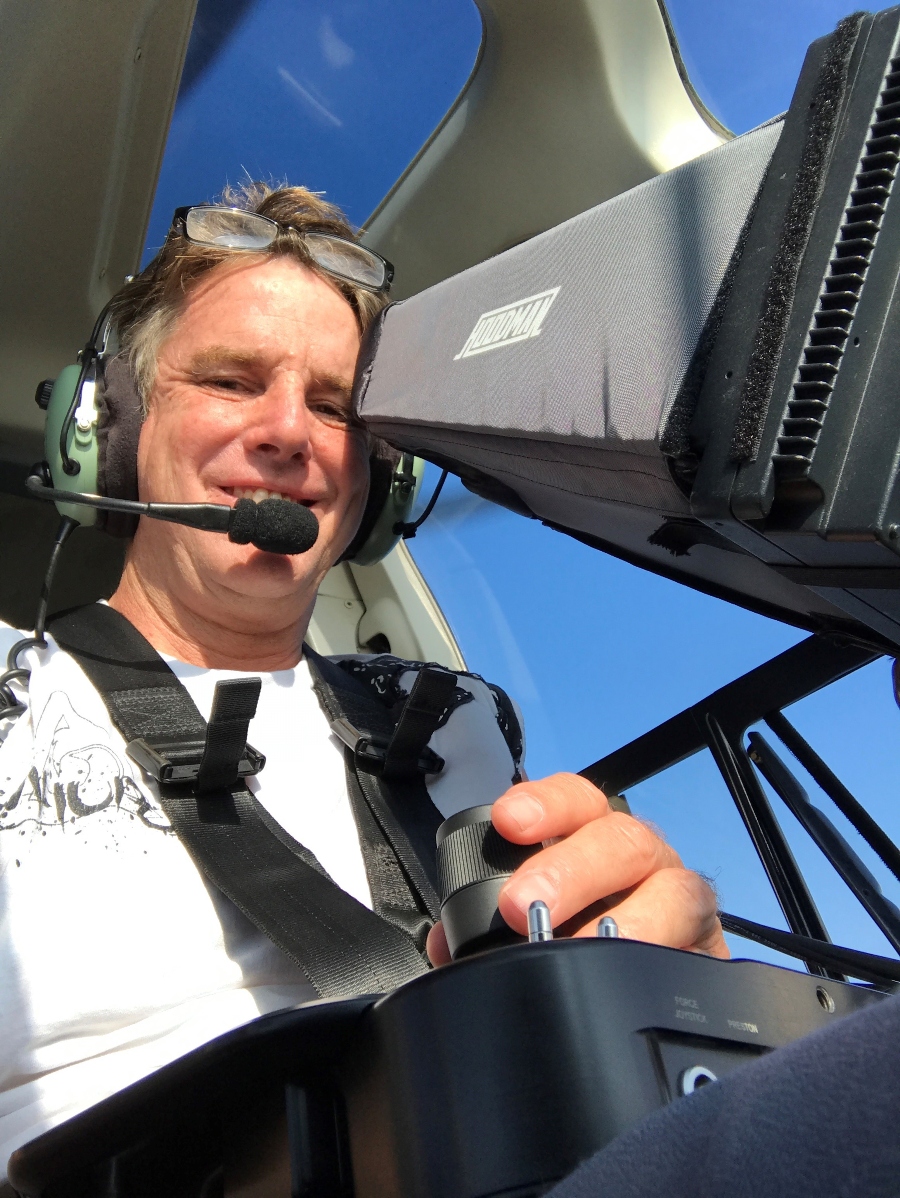
BTL: The series ends with a surfing competition in Nazaré. Can you talk about how you orchestrated the coverage?
Prickett: I was in a van on the shore where I could view all the camera feeds. I also had the camera rig we invented, a gyro-stabilized gimbal mounted on the back of a Jet Ski that worked by remote control. I could pan, tilt, and zoom that camera. I could also tell the Jet Ski driver, ‘Catch this wave, follow that surfer,’ telling him where to go.
Everyone had their assignments. The guys in the water are following our group of surfers, especially Garrett and CJ, and any kind of drama that happens there. The guys on the beach are more worried about shooting the Jet Skis going over waves, rescues, [and] things like that. The guy on the cliff is helping spot and get the rescues from above.
When you have 15 to 20 cameras rolling and a 100-foot wave coming in, you can’t simultaneously tell each guy to zoom in or whatever. You have to trust their instincts. Also, our feeds were not always line-of-sight, so we could lose signals for a second or so when waves passed. We were shooting large format, 8K, so we had a little bit of latitude.
BTL: What was your camera package for this series?
Prickett: For the run-and-gun stuff, we used the Canon C500 MkII. The main camera was a Red Monstro, shooting 8K Vista Vision with Canon, Zeiss, and vintage Leica lenses. On the gimbals, we used the Red Monstro with a Canon 50–1000 mm lens. For the compact rig, we had a Z Cam E2-F6 with a Jujinon 20–120 lens. That 50–1000 lens is amazing. Anyone who doesn’t have it should put it in their arsenal. Sports, natural history, shooting polar bears, or whatever, you just can’t miss.
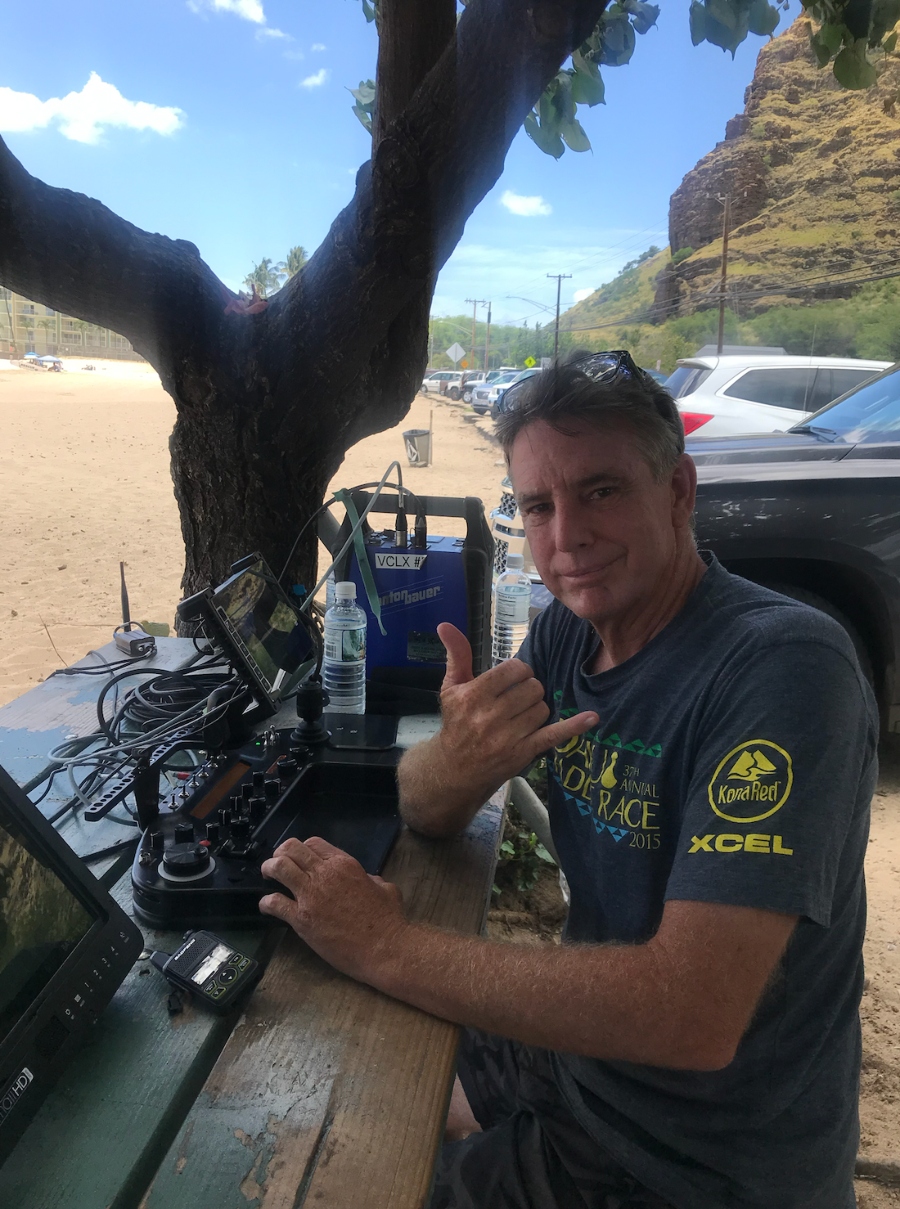
BTL: What about on the boards and helmets?
Prickett: On the boards, we used Z Cams. It’s like a sensor block, tiny and effective. GoPros on the helmets. GoPros have come a long way. I think I used the first series on Chasing Mavericks, that’s the movie I got hurt on. They’re up to, I think, 11 now. They have amazing stabilization now, they’re a great little crash camera.
BTL: You have some incredible drone footage as well.
Prickett: Drones are amazing. Years ago, they were this new thing, and now, by the second part of this series, we developed waterproof versions. We can actually get them in the tube. They can get hit by water, go in the whitewash, [and] get wiped out. And then flip over and take off again.
So we now have waterproof FPV [first person view] drones that we can get really close without worrying about getting hit by waves. We have some tracking shots in 100 Foot Wave that have never been seen before.
BTL: Do you make your proprietary equipment available to others?
Prickett: Yes, definitely, it’s available to anyone. We’re showing it to feature shoots now, and it will be ready for the general public soon.
We’re based in Hawaii but we do stuff all over the world. I shoot for Red Bull and Surfline, and we literally have equipment all over the world: Tahiti, Ireland, France, [and] California. We’re chasing big waves live this year via a satellite signal, which will make everything that much harder.
Season 1 of 100 Foot Wave is now available on HBO and streaming on HBO Max.





